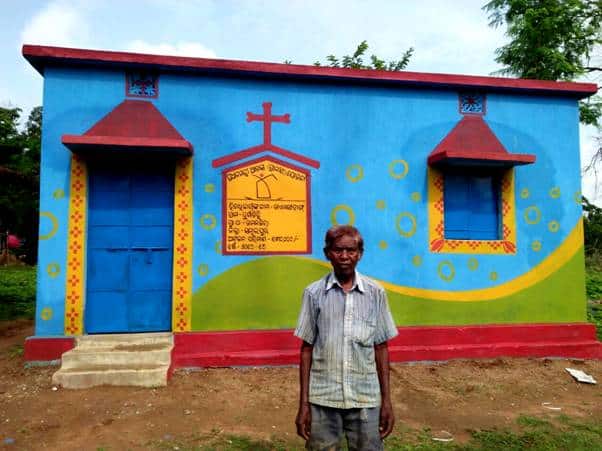What’s in today’s article?
- Why in News?
- About the PMAY-G
- Salient Features of the PMAY-G
- What makes PMAY-G unique?
- Why is the other States/UTs share given to UP?
Why in News?
- The Centre has withdrawn the allocation of 1.44 lakh houses from about two dozen states and UTs which failed to sanction the houses by June 30 under the PMAY-G, and given these to UP as additional allocation.
- Under the Pradhan Mantri Awas Yojana-Gramin (PMAY-G), the Union Ministry of Rural Development (MoRD) aims to construct 2.95 crore houses by March 2024.
About the PMAY-G:
- Although Indira Awas Yojana (started in 1996) addressed the housing needs in the rural areas, certain gaps were identified (lack of transparency in selection of beneficiaries, low quality houses, weak monitoring, etc) by CAG in 2014.
- To address these gaps in the rural housing program and in view of the Government’s commitment to providing “Housing for All’’ by 2022, the IAY has been restructured into PMAY-G w.e.f. 1st April 2016.
- PMAY-G aims at providing a pucca house, with basic amenities, to all houseless householders and those households living in kutcha and dilapidated houses, by 2022.
- The immediate objective is to cover 1.00 crore households living in kutcha houses/ dilapidated houses in three years from 2016-17 to 2018- 19.
- According to data available, of the Centre’s allocation of 2.93 crore houses till July 17 2023, 2.90 crore have been sanctioned, of which 2.31 crore have been completed.
Salient Features of the PMAY-G:
- The minimum size of the house has been increased to 25 sq.mt (from 20 sq.mt) with a hygienic cooking space.
- The unit assistance has been increased
- From Rs 70,000 to Rs 1.20 lakh in plain (to be shared in the ratio 60:40 between Central and State Government) and
- From Rs 75,000 to Rs 1.30 lakh for North Eastern and the Himalayan States (90:10).
- The assistance for construction of toilets shall be leveraged through convergence with SBM-G, MGNREGS or any other dedicated source of funding.
- For convergence for piped drinking water, electricity connection, LPG gas connection, etc., different government programmes are also to be attempted.
What makes PMAY-G unique?
- PMAY-G instead of selecting the beneficiary from among the BPL households, selects them using housing deprivation parameters in the SECC 2011 which is to be verified by the Gram Sabhas.
- Towards better quality of construction, setting up of a Nation Technical Support Agency (NTSA) at the national level is envisaged.
- Also, a pan-India training and certification programme of Masons has been launched in the States/UTs.
- In PMAY-G, programme implementation and monitoring are to be carried out through an end-to-end e-Governance model – using AwaasSoft and Awaas App.
- Also, the programme implementation is to be monitored through community participation (Social Audit), Member of Parliament (DISHA Committee), etc.
Why is the other States/UTs share given to UP?
- The Centre has set a target of constructing 2.95 crore houses by March 2024.
- Of the 2.95 crore houses,
- 2.04 crore were to be allocated to states based on the Socio-Economic Caste Census (SECC) data,
- While the remaining 91 lakh houses were allocated based on a survey, Awas+, which was conducted between June 2018 and March 2019 across the country
- However, these states and UTs (Gujarat, Tripura, Odisha, Sikkim, Meghalaya, Andaman and Nicobar Islands, MP, Kerala, etc) together failed to sanction a total of 1,44,220 houses within the deadline of June 30.
- On the other hand, UP, which was initially allocated 34.72 lakh houses, had sought the Centre’s approval for additional houses.
- Of the initial allocation, UP has completed construction of 29.82 lakh houses while the remaining are under construction.
- Now, it has been allocated the additional 1,44,220 houses withdrawn from the other states and UTs.
Q1) What do you mean by a social audit?
A social audit is an assessment of a program or policy that is conducted collaboratively by the public and the government with a focus on those who will be impacted by or benefit from the program or policy.
Q2) What is the Socio-Economic Caste Census (SECC)?
SECC-2011 is a study of socio-economic status of rural and urban households and allows ranking of households based on predefined parameters. It has three census components which were conducted by three separate authorities but under the overall coordination of the Department of Rural Development, GoI.
Source: Deadline missed, 23 states, UTs lose 1.44 lakh PMAY units to UP | PMAYG
Last updated on June, 2025
→ UPSC Notification 2025 was released on 22nd January 2025.
→ UPSC Prelims Result 2025 is out now for the CSE held on 25 May 2025.
→ UPSC Prelims Question Paper 2025 and Unofficial Prelims Answer Key 2025 are available now.
→ UPSC Calendar 2026 is released on 15th May, 2025.
→ The UPSC Vacancy 2025 were released 1129, out of which 979 were for UPSC CSE and remaining 150 are for UPSC IFoS.
→ UPSC Mains 2025 will be conducted on 22nd August 2025.
→ UPSC Prelims 2026 will be conducted on 24th May, 2026 & UPSC Mains 2026 will be conducted on 21st August 2026.
→ The UPSC Selection Process is of 3 stages-Prelims, Mains and Interview.
→ UPSC Result 2024 is released with latest UPSC Marksheet 2024. Check Now!
→ UPSC Toppers List 2024 is released now. Shakti Dubey is UPSC AIR 1 2024 Topper.
→ Also check Best IAS Coaching in Delhi













